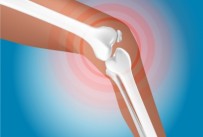ACL and Physical Therapy

The ACL and physical therapy
Written by: Paul Kochoa, PT, DPT, OCS, CKTP, CGFI
If you know an athlete or is someone who’s involved in sports and exercise, then undoubtedly you’ve heard of the these three letters: A.C.L.
ACL stands for anterior cruciate ligament. It’s a key stabilizing structure of the knee. It prevents external rotation (foot/toe points outward) and anterior movement of the tibia in relation to the femur (the lower leg bone moving forward under the upper leg bone). When you participate in sports that require a lot of pivoting and quick cutting movements, then you know the importance of the ACL. When you sprain it or rupture it, then you lose that stability. But do you immediately go under the knife and have surgery to repair it? Not necessarily. According to an article in the New England Journal of Medicine, ACL surgery and rehabilitation was no better than rehabilitation and delayed or cancelled surgery (which also decreased the number of surgeries performed).¹
The study investigated what is the optimal protocol after an ACL tear. Previously, the rule of thumb was to get an ACL reconstruction as soon as possible and then follow it up with physical therapy. However, according to the study, you can successfully delay or cancel surgery if you perform the rehabilitation first. They looked at rehab exercises with eventual return to sports along with factors such as level of function, satisfaction levels, and pain intensity. The results were the almost the same between those who had immediate surgery and those who didn’t.
However, the study also points out that ACL-deficient knees are also at higher risk for developing other knee problems such as osteoarthritis or meniscal damage due to the increased wear and tear on the joint. Using a brace during sports activities that require a lot of cutting and quick stop/start movements doesn’t completely protect you from these problems. But a sport or recreational activity that is comprised of only uni-directional movement (like running/jogging or biking) doesn’t put that much stress on a knee joint.
The knee can be stabilized with muscles and tendons if you train correctly and perform the right exercises. Forward and backward motions don’t put that much stress on the ACL, so you can get by without one if you just run or bike.
Bottom line, talk it over with your doctor and your physiotherapist if you’ve had an ACL tear and are thinking about surgery.
If you would like more information, please call Professional Physical Therapy and Training at 973-270-7417. Our offices our located within the YMCA locations in Madison and Summit, NJ. You do not need to be a member of the YMCA to visit with us.
1. Frobell RB, Roos EM, Roos HP, et al. A randomized trial of treatment for acute anterior cruciate ligament tears. N Eng JM. 2010;363:331-342.
Image courtesy of scottchan / FreeDigitalPhotos.net